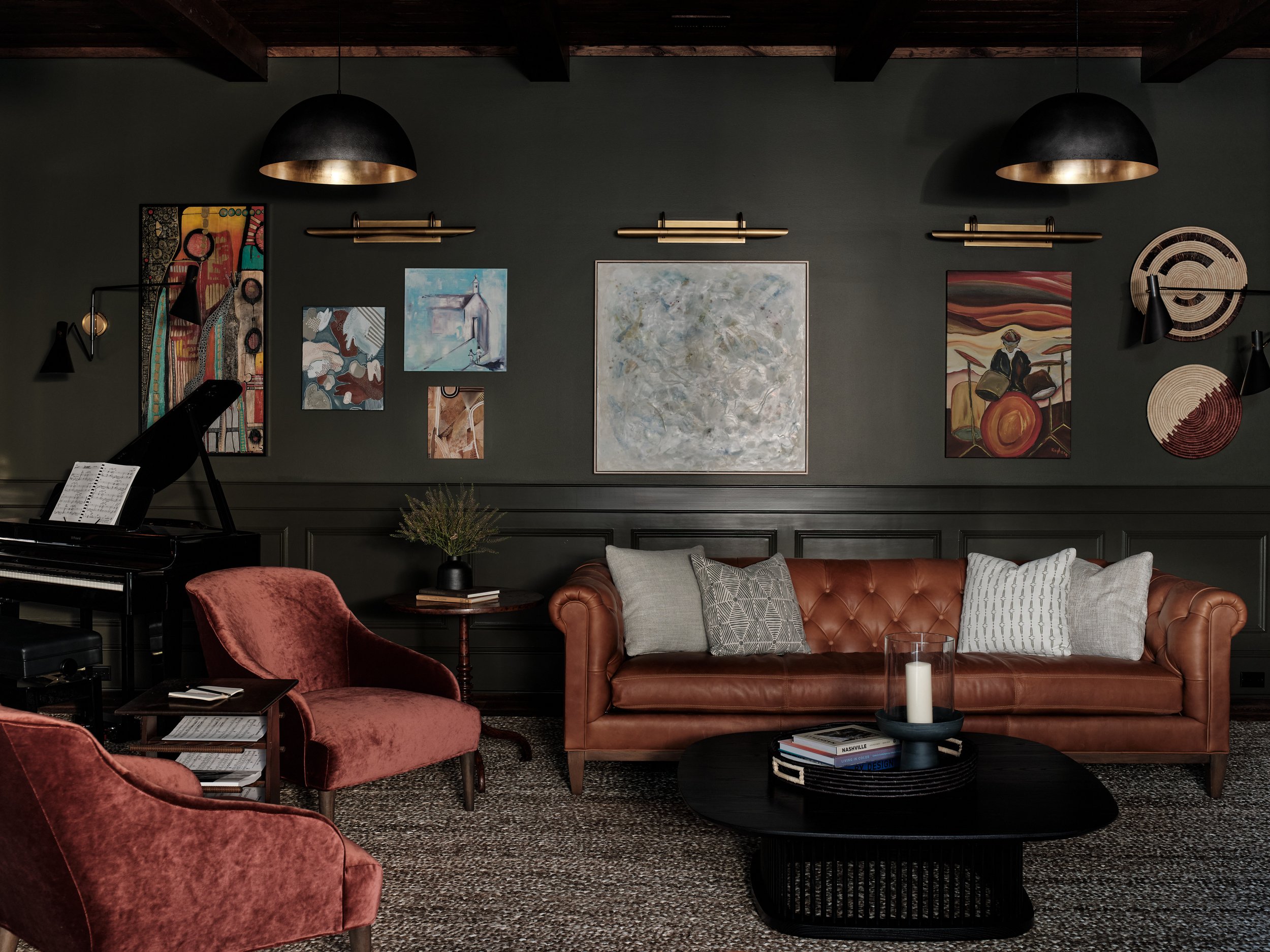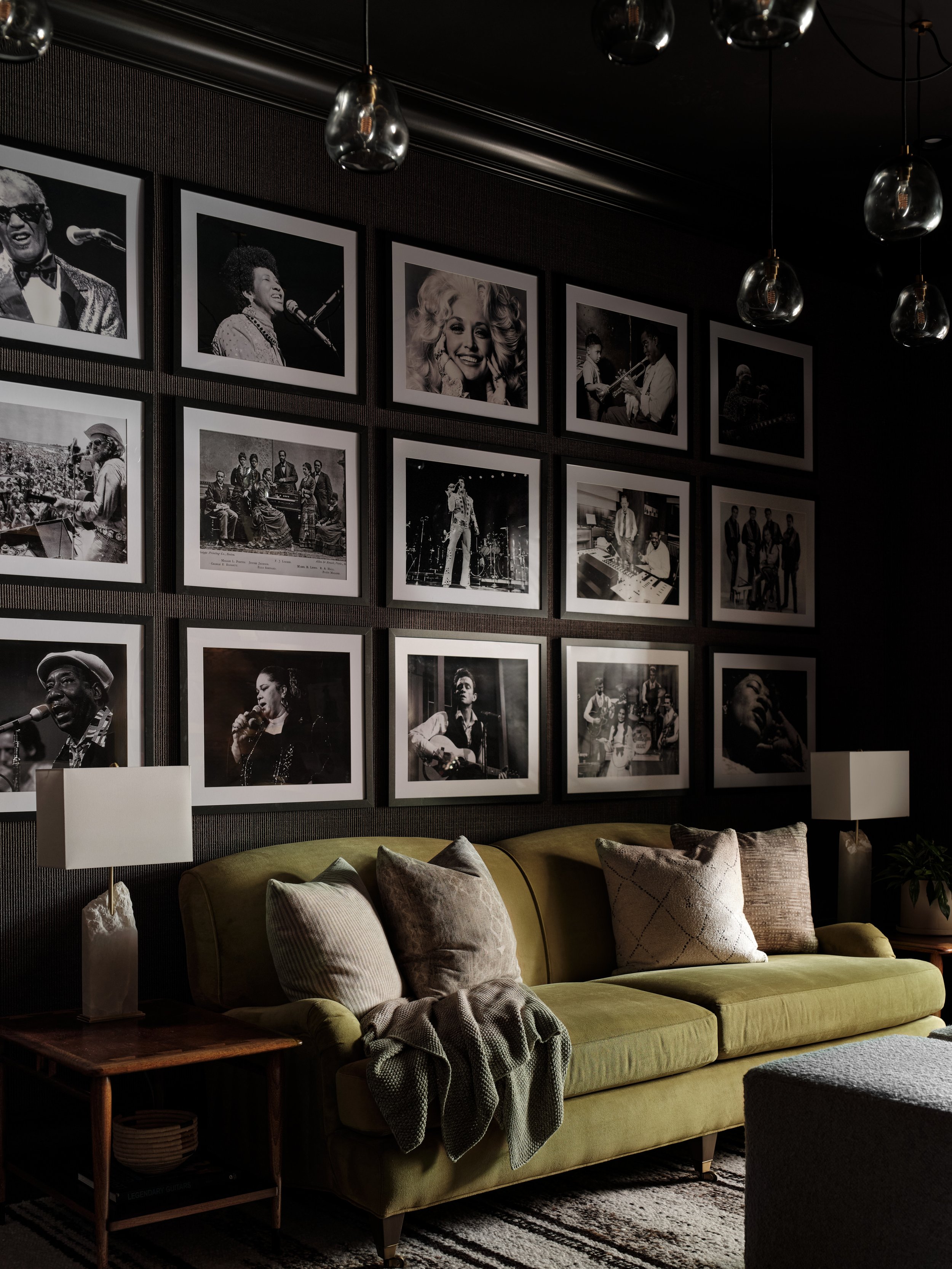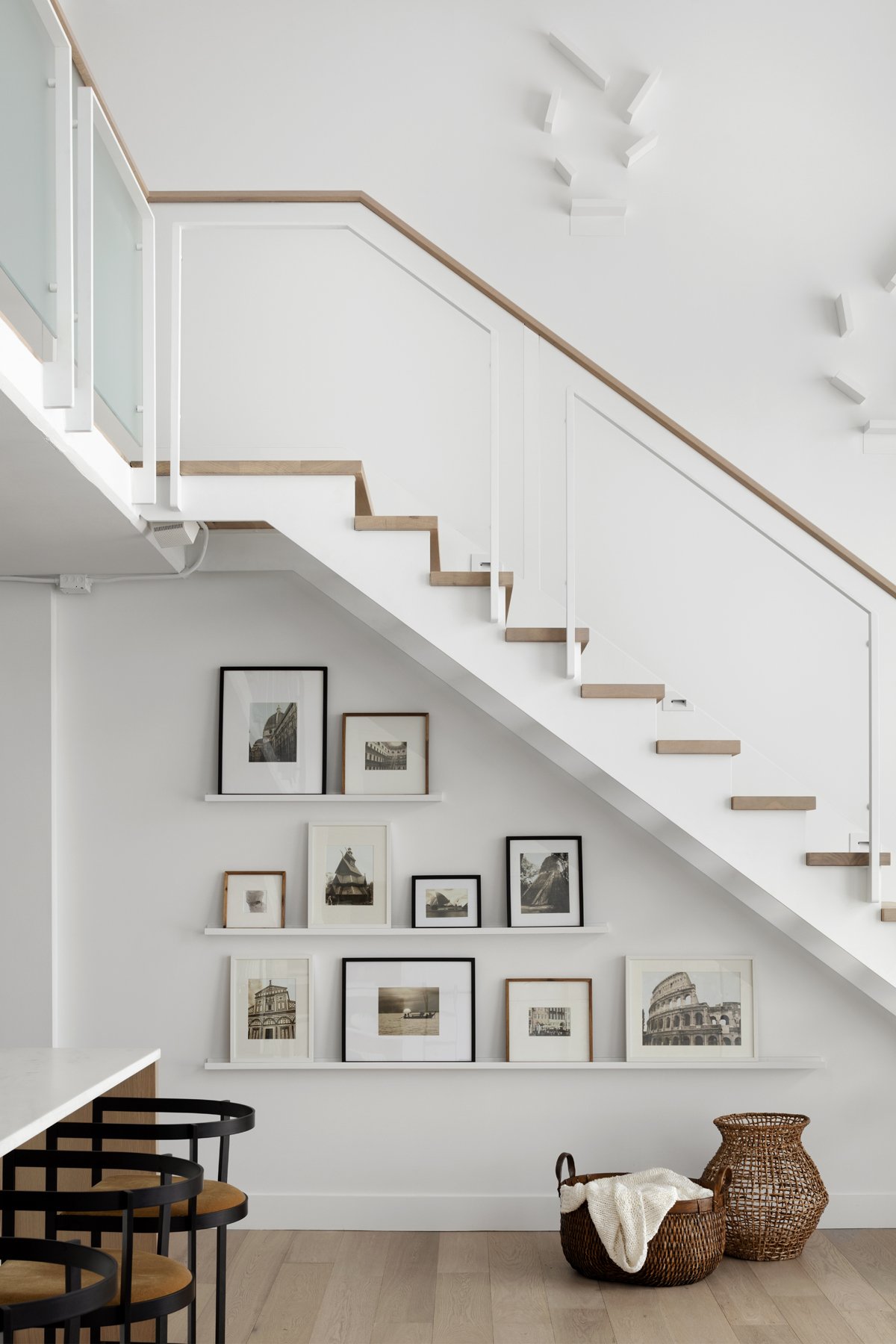Why are Gallery Walls so Appealing Yet Also so Intimidating to Create?
Let’s first take a look at what a gallery wall is and why we love them. A curated display of art, photographs, and/or mementos, a gallery wall can reflect your life’s experiences, your personal style and your interests. The tricky part is crafting a gallery wall that not only looks good but feels intimately personal to you.
Story: We love to create environments that tell not only a story but also evoke an emotional response. One of the best ways to do that is to take a deep dive into your own style and story. Platforms like Pinterest, Instagram, and design magazines are the perfect place to start but when it comes to artwork, I always suggest visiting galleries in person so you can really get a feel for the scale and color of the pieces. Even if you don’t find anything right away, getting out and seeing art in person can help you get a better idea of what appeals to you.
Curation: Starting with a clear vision can guide your project towards a cohesive look and feel. The magic of a gallery wall lies in the story it tells so select pieces that hold personal significance, whether they're original art, prints, photographs, heirlooms, or even children's artwork. Mix mediums and textures for depth—combine photographs with paintings, fabric pieces, and metal works if they’re meaningful to you. Remember, each item doesn't need to match perfectly, but there should be a common thread that ties the collection together, such as a color scheme, subject matter, or frame style.
Arrangement: Make it easy and plan your layout with large pieces of craft paper cut to match the size of each piece. Start with the largest piece as your anchor, then arrange the other pieces one at a time. If you have two larger pieces, try placing them diagonally across from each other to visually balance the arrangement. Aim for balance rather than symmetry, and consider leaving at least 2 to 3 inches of space between each piece. If you're doing a dry run with craft paper, keep in mind that a white frame and mat will make the spaces between each piece feel larger. Your eye will perceive the darker area more prominently from a distance so white frames might need to be placed closer together.
The Midline: A common mistake in hanging artwork is misjudging the height. We typically hang art so that the midpoint of each piece is about 57-60 inches from the floor, aligning with the average human eye level. Use this "midline rule" as your guide, especially for the central piece of your gallery wall, to create a harmonious visual experience.
Framing: There's beauty in both uniformity and contrast. A collection of identical frames can create a clean, cohesive look, ideal for contemporary spaces or colorful and eclectic art or photos. Conversely, an assortment of frames in different sizes, colors, and styles can feel more vibrant and it can also give some variety to a wall of similar artwork (i.e. black and white photos). If mixing frames, keep at least one element consistent, like the color palette or mat style, to unify the collection.
Lighting: Proper lighting will elevate your gallery wall so consider picture lights to highlight your artwork and bring the display to life. If natural light isn’t fully shaded, be mindful of placing sensitive items where direct sunlight might cause fading.
Ever Evolving: The beauty of a gallery is that it can adapt and evolve over time, reflecting your changing interests and experiences.
Creating a gallery wall can be an art form in itself, one that weaves together your personal style with creative storytelling. If you can embrace the process, you'll create a space that not only looks beautiful but also reflects the uniqueness of your journey and style. Remember, the most memorable and meaningful gallery walls are those that are deeply personal and thoughtfully curated.



